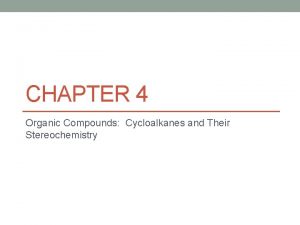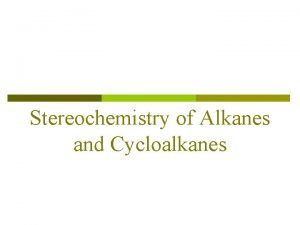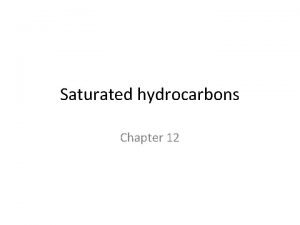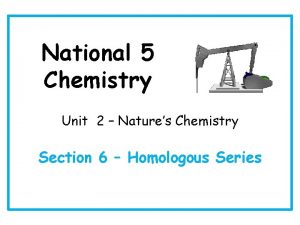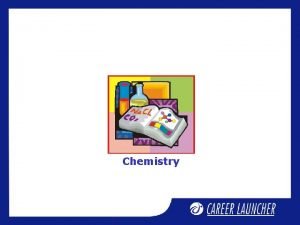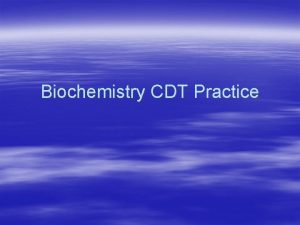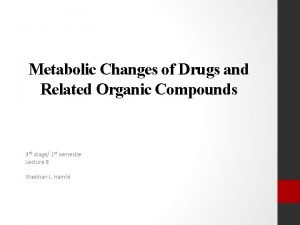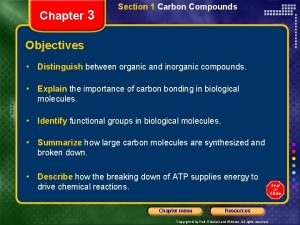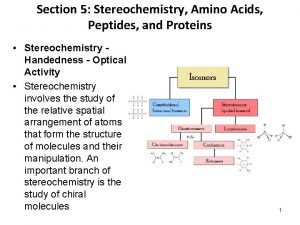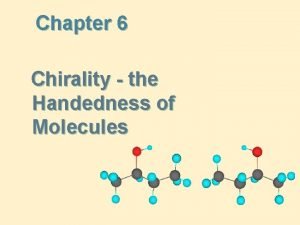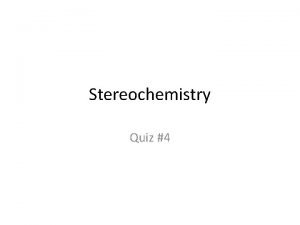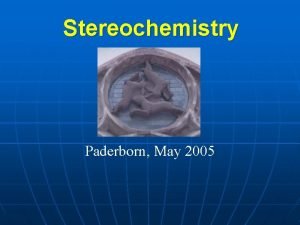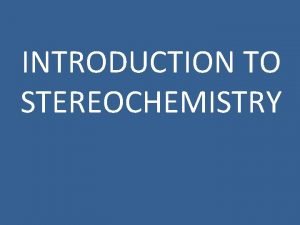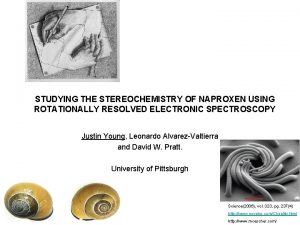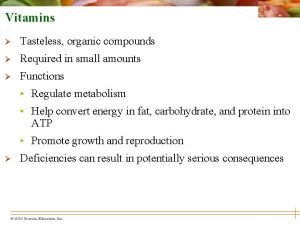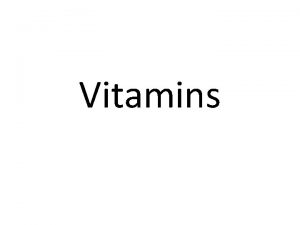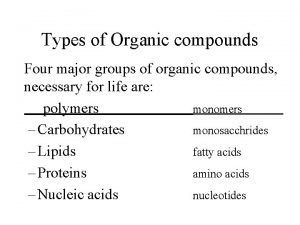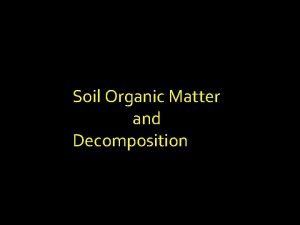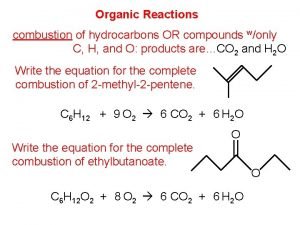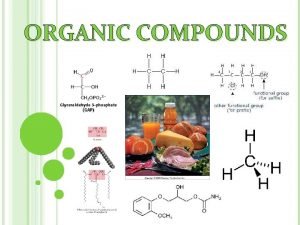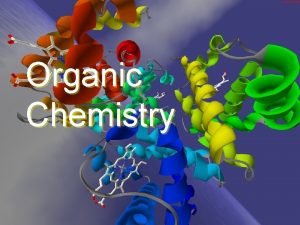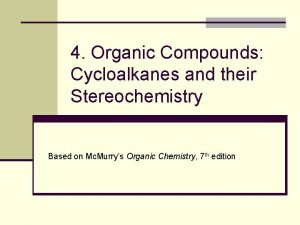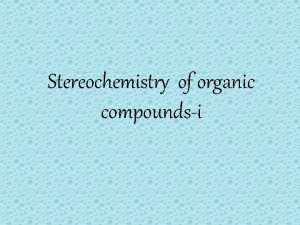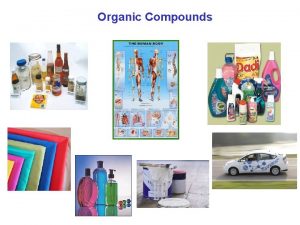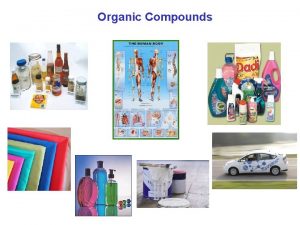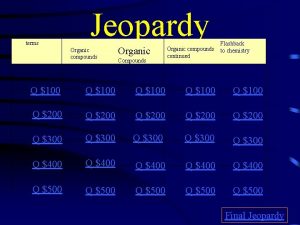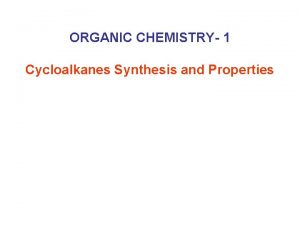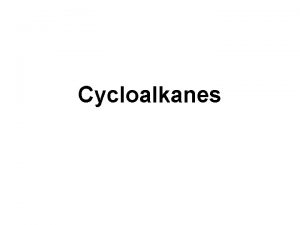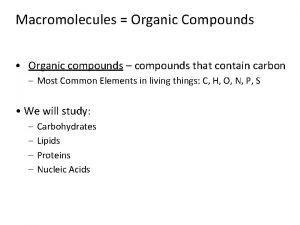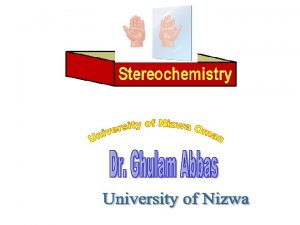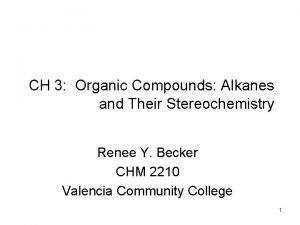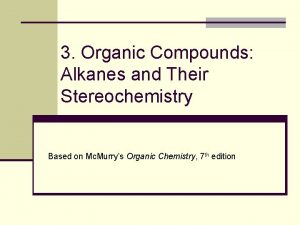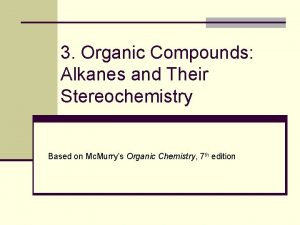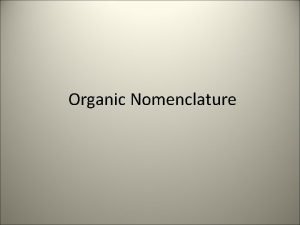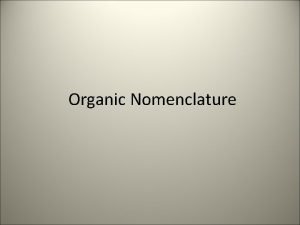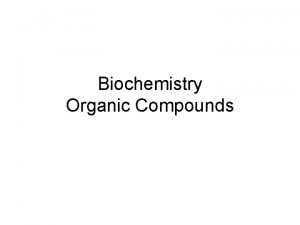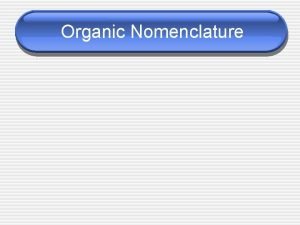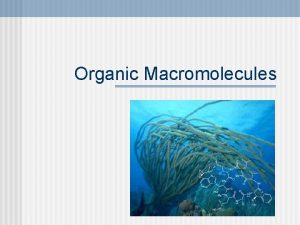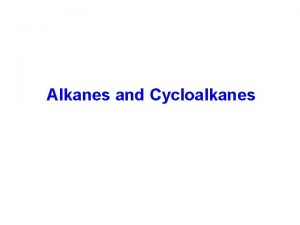4 Organic Compounds Cycloalkanes and their Stereochemistry Assis




























- Slides: 28

4. Organic Compounds: Cycloalkanes and their Stereochemistry Assis. Prof. Dr. Nadhir Najim Abdullah Jafar/ Al. Mustaqbal university college/ Dep. of Pharmacy/ organic chemistry (I)

n We’ve discussed open-chained compounds up to this point n Most organic compounds contain rings of carbon atoms e. g. - Prostaglandins - Steroids 2

Why this chapter? n Because cyclic molecules are commonly encountered in all classes of biomolecules: - Proteins Lipids Carbohydrates Nucleic acids 3

4. 1 Naming Cycloalkanes n Cycloalkanes are saturated cyclic hydrocarbons n Have the general formula (Cn. H 2 n) 4

Naming Cycloalkanes n Find the parent. # of carbons in the ring. n Number the substituents 5

4. 2 Cis-Trans Isomerism in Cycloalkanes are less flexible than open-chain alkanes n Much less conformational freedom in cycloalkanes 6

n Because of their cyclic structure, cycloalkanes have 2 faces as viewed edge-on “top” face “bottom” face - Therefore, isomerism is possible in substituted cycloalkanes - There are two different 1, 2 dimethyl-cyclopropane isomers 7

Stereoisomerism n Compounds which have their atoms connected in the same order but differ in 3 -D orientation 8

4. 3 Stability of Cycloalkanes: Ring Strain n Rings larger than 3 atoms are not flat n Cyclic molecules can assume nonplanar conformations to minimize angle strain and torsional strain by ring-puckering n Larger rings have many more possible conformations than smaller rings and are more difficult to analyze 9

Stability of Cycloalkanes: The Baeyer Strain Theory n Baeyer (1885): since carbon prefers to have bond angles of approximately 109°, ring sizes other than five and six may be too strained to exist n Rings from 3 to 30 C’s do exist but are strained due to bond bending distortions and steric interactions 10

Summary: Types of Strain n Angle strain - expansion or compression of bond angles away from most stable n Torsional strain - eclipsing of bonds on neighboring atoms n Steric strain - repulsive interactions between nonbonded atoms in close proximity 11

4. 4 Conformations of Cycloalkanes Cyclopropane n 3 -membered ring must have planar structure n Symmetrical with C–C–C bond angles of 60° n Requires that sp 3 based bonds are bent (and weakened) n All C-H bonds are eclipsed 12

Bent Bonds of Cyclopropane n In cyclopropane, the C-C bond is displaced outward from internuclear axis 13

Cyclobutane n Cyclobutane has less angle strain than cyclopropane but more torsional strain because of its larger number of ring hydrogens n Cyclobutane is slightly bent out of plane - one carbon atom is about 25° above n The bend increases angle strain but decreases torsional strain 14

Cyclopentane n Planar cyclopentane would have no angle strain but very high torsional strain n Actual conformations of cyclopentane are nonplanar, reducing torsional strain n Four carbon atoms are in a plane n The fifth carbon atom is above or below the plane – looks like an envelope 15

4. 5 Conformations of Cyclohexane n Substituted cyclohexanes occur widely in nature n The cyclohexane ring is free of angle strain and torsional strain n The conformation is has alternating atoms in a common plane and tetrahedral angles between all carbons n This is called a chair conformation 16

How to Draw Cyclohexane 17

4. 6 Axial and Equatorial Bonds in Cyclohexane n The chair conformation has two kinds of positions for substituents on the ring: axial positions and equatorial positions n Chair cyclohexane has six axial hydrogens perpendicular to the ring (parallel to the ring axis) and six equatorial hydrogens near the plane of the ring 18

Axial and Equatorial Positions n Each carbon atom in cyclohexane has one axial and one equatorial hydrogen n Each face of the ring has three axial and three equatorial hydrogens in an alternating arrangement 19

Drawing the Axial and Equatorial Hydrogens 20

Conformational Mobility of Cyclohexane n Chair conformations readily interconvert, resulting in the exchange of axial and equatorial positions by a ring-flip 21

4. 7 Conformations of Monosubstituted Cyclohexanes n Cyclohexane ring rapidly flips between chair conformations at room temp. n Two conformations of monosubstituted cyclohexane aren’t equally stable. n The equatorial conformer of methyl cyclohexane is more stable than the axial by 7. 6 k. J/mol 22

1, 3 -Diaxial Interactions n Difference between axial and equatorial conformers is due to steric strain caused by 1, 3 -diaxial interactions n Hydrogen atoms of the axial methyl group on C 1 are too close to the axial hydrogens three carbons away on C 3 and C 5, resulting in 7. 6 k. J/mol of steric strain 23

Relationship to Gauche Butane Interactions n Gauche butane is less stable than anti butane by 3. 8 k. J/mol because of steric interference between hydrogen atoms on the two methyl groups n The four-carbon fragment of axial methylcyclohexane and gauche butane have the same steric interaction n In general, equatorial positions give more stable isomer 24

4. 8 Conformational Analysis of Disubstituted Cyclohexanes n In disubstituted cyclohexanes the steric effects of both substituents n n must be taken into account in both conformations There are two isomers of 1, 2 -dimethylcyclohexane. cis and trans In the cis isomer, both methyl groups are on the same face of the ring, and compound can exist in two chair conformations Consider the sum of all interactions In cis-1, 2, both conformations are equal in energy 25

Trans-1, 2 -Dimethylcyclohexane n Methyl groups are on opposite faces of the ring n One trans conformation has both methyl groups equatorial and only a gauche butane interaction between methyls (3. 8 k. J/mol) and no 1, 3 diaxial interactions n The ring-flipped conformation has both methyl groups axial with four 1, 3 diaxial interactions n Steric strain of 4 3. 8 k. J/mol = 15. 2 k. J/mol makes the diaxial conformation 11. 4 k. J/mol less favorable than the diequatorial conformation n trans-1, 2 -dimethylcyclohexane will exist almost exclusively (>99%) in the diequatorial conformation 26

4. 9 Conformations of Polycyclic Molecules n Decalin consists of two cyclohexane rings joined to share two n n n carbon atoms (the bridgehead carbons, C 1 and C 6) and a common bond Two isomeric forms of decalin: trans fused or cis fused In cis-decalin hydrogen atoms at the bridgehead carbons are on the same face of the rings In trans-decalin, the bridgehead hydrogens are on opposite faces Both compounds can be represented using chair cyclohexane conformations Flips and rotations do not interconvert cis and trans 27

28
 Cyclopentane cis trans isomers
Cyclopentane cis trans isomers Bond angle in cyclohexane
Bond angle in cyclohexane Unsaturated hydrocarbon
Unsaturated hydrocarbon Cycloalkanes
Cycloalkanes Equation for incomplete combustion of propene
Equation for incomplete combustion of propene Condensed structural formula of alkenes
Condensed structural formula of alkenes Organic and inorganic compounds experiment
Organic and inorganic compounds experiment Purification and characterization of organic compounds
Purification and characterization of organic compounds Organic compounds such as proteins and starches are too
Organic compounds such as proteins and starches are too Metabolic changes of drugs and related organic compounds
Metabolic changes of drugs and related organic compounds All organic compounds contain carbon and ________.
All organic compounds contain carbon and ________. Covalent and ionic venn diagram
Covalent and ionic venn diagram What is protien
What is protien S configuration
S configuration Stereochemistry quiz
Stereochemistry quiz Father of stereochemistry
Father of stereochemistry Introduction to stereochemistry
Introduction to stereochemistry Stereochemistry
Stereochemistry Stereochemistry of penicillin
Stereochemistry of penicillin Introduction to stereochemistry
Introduction to stereochemistry How are vitamins absorbed
How are vitamins absorbed Classification of vitamins chart
Classification of vitamins chart Four major groups of organic compounds
Four major groups of organic compounds Decomposition of organic compounds
Decomposition of organic compounds Combustion of organic compounds
Combustion of organic compounds These are organic compounds made by living things
These are organic compounds made by living things All organic compounds must contain the element
All organic compounds must contain the element Organic compounds must contain:
Organic compounds must contain: Iupac suffix table
Iupac suffix table
